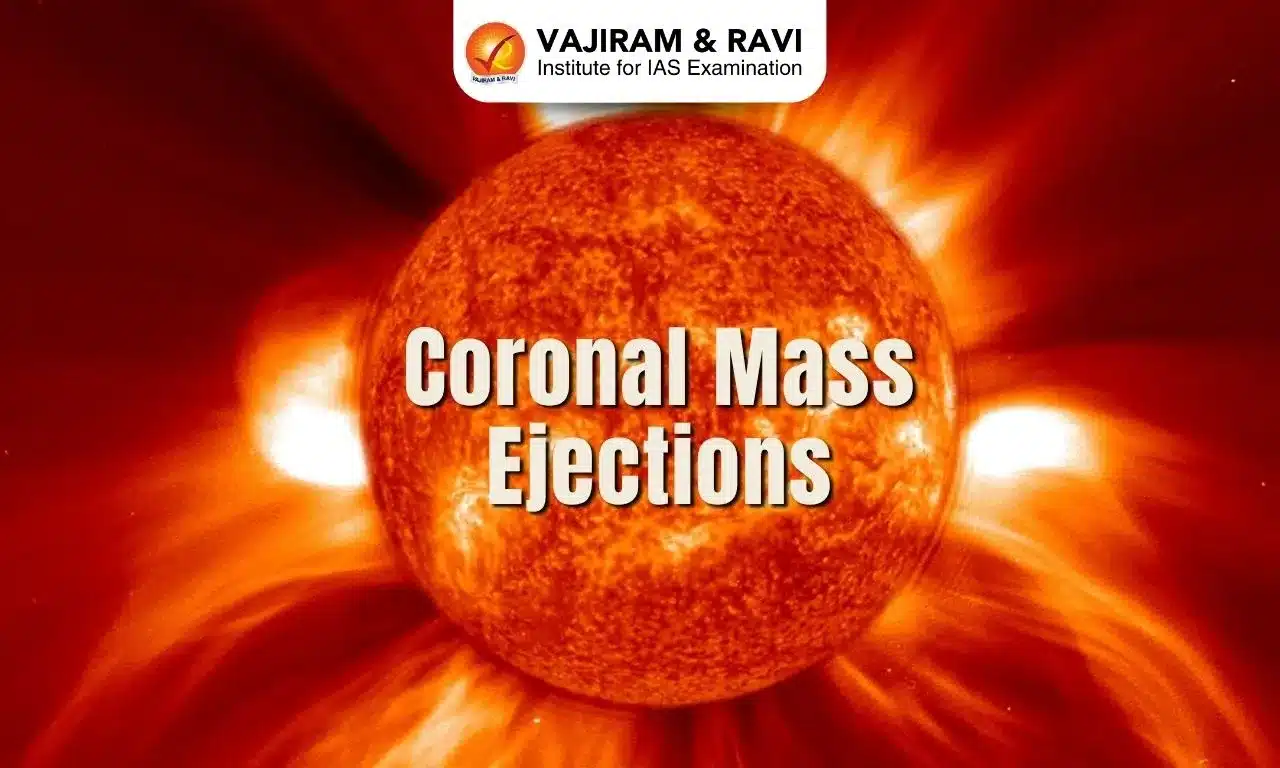Coronal Mass Ejections Latest News
Astronomers have unveiled the intricate tale behind a series of powerful solar eruptions called Coronal Mass Ejections (CMEs), that resulted in rare northern lights dancing across Ladakh’s night skies in May 2024.
About Coronal Mass Ejections
- These are massive ejections of magnetized plasma from the Sun’s corona.
How are Coronal Mass Ejections formed?
- They form similarly to solar flares—a result of the twisting and realignment of the sun’s magnetic field, known as magnetic reconnection.
- When magnetic field lines “tangle” they produce strong localized magnetic fields which can break through the surface of the sun at active regions, subsequently generating CMEs.
- CMEs usually take place around sunspot groups and are often accompanied by a solar flare, though the two don’t always occur in tandem.
- CMEs travel outward from the sun at speeds ranging from slower than 250 kilometers per second (km/s) to as fast as 3000 km/s.
- The fastest Earth-directed CMEs can reach our planet in as little as 15-18 hours.
- They expand in size as they propagate away from the Sun, and larger CMEs can reach a size comprising nearly a quarter of the space between Earth and the Sun by the time they reach our planet.
- CMEs, like solar flares, are most common during the solar maximum, a period in the sun’s 11-year cycle of activity when the star is at its most active.
- Impact on Earth: When such solar blasts are directed toward the Earth, they can cause geomagnetic storms capable of disrupting satellite operations, communication systems and power grids.
Source: PIB
Last updated on July, 2025
→ UPSC Notification 2025 was released on 22nd January 2025.
→ UPSC Prelims Result 2025 is out now for the CSE held on 25 May 2025.
→ UPSC Prelims Question Paper 2025 and Unofficial Prelims Answer Key 2025 are available now.
→ UPSC Calendar 2026 is released on 15th May, 2025.
→ The UPSC Vacancy 2025 were released 1129, out of which 979 were for UPSC CSE and remaining 150 are for UPSC IFoS.
→ UPSC Mains 2025 will be conducted on 22nd August 2025.
→ UPSC Prelims 2026 will be conducted on 24th May, 2026 & UPSC Mains 2026 will be conducted on 21st August 2026.
→ The UPSC Selection Process is of 3 stages-Prelims, Mains and Interview.
→ UPSC Result 2024 is released with latest UPSC Marksheet 2024. Check Now!
→ UPSC Toppers List 2024 is released now. Shakti Dubey is UPSC AIR 1 2024 Topper.
→ Also check Best IAS Coaching in Delhi
Coronal Mass Ejections FAQs
Q1. What is the danger of a solar storm in space? +
Q2. Which ISRO mission aims to study solar flares, coronal mass ejections, and their effect on Earth's magnetic field?+















